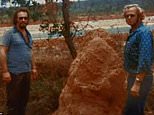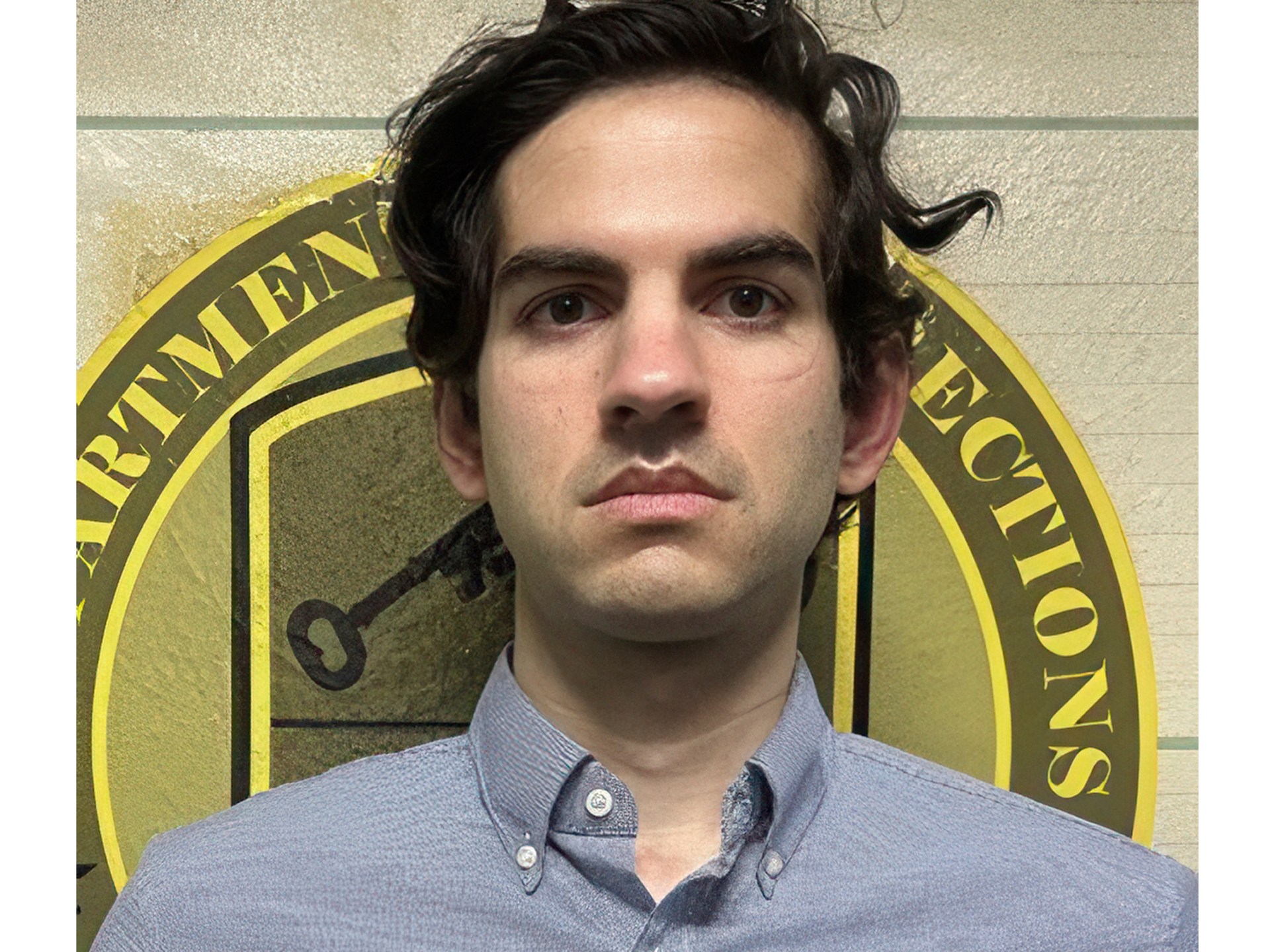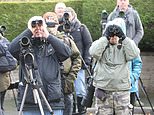
An incredible new theory on what happened to the three men who managed to escape from Alcatraz in the 1960s has emerged.
Brothers John and Clarence Anglin, alongside friend Frank Morris, tunneled out of their cell of the maximum security prison in June 1962 before disappearing into the waters of the San Francisco Bay and have never been found.
And now writers Ken Widner and Mike Lynch share their fascinating theory. Their book, Alcatraz: The Last Escape, alleges the trio escaped the jail in a makeshift raft and used wires to hitch themselves to a passing boat.
From there, the fugitives met a second boat in the San Francisco Bay area, which took them to dry land. A private plane chartered from a small airport at neighboring Marin County flew the trio to Mexico to begin a new life, it is claimed.
They later moved to Brazil, where at least two of the men are said to have survived until the 1990s.
Federal investigations into the escape – immortalized in the 1979 film Escape From Alcatraz starring Clint Eastwood – concluded that the Anglin brothers and Morris must have drowned in the freezing, shark-infested bay.
Widner and Lynch have used family interviews, historical documents and photo evidence to explain their theory.
Widner, who also happens to be the nephew of the Anglin brothers, claims the trio made their way south and married locals, raising children of their own and tended to farms in the mountains of Brazil until at least the 1990s.
Hoping to correct the record about his uncles, Widner deep dived into their upbringing which stretched back to their formative years in Ruskin, Florida, with their parents who were seasonal farmworkers.
Warrants are still out for the three men, seen here in their booking photos for armed bank robberies. The three worked together to dig their way out of Alcatraz and sneak past guards
The men carved holes through the vents in their cells using spoons, drills and other utensils, which they then shimmied out of
An investigation found that the three men created dummy heads out of plaster, paint and hair left from the barber to fool the night guards into thinking they were asleep as they escaped on June 11, 1962
In 1958, John and Clarence and their other brother Alfred robbed a bank in Alabama using a toy gun and were subsequently sent to prison.
After an escape attempt, they wound up being transferred to the place for those who couldn’t abide by the rules of a typical prison, Alcatraz. Inside the walls of the famous prison they met Morris and started scheming as to how they could make their way out.
Their escape plan began to take shape in December 1961, when Allen West, who accompanied an adjacent cell, began collecting old saw blades he found in one of the utility corridors while on cleaning duty.
Widner, who also happens to be the nephew of the Anglin brothers, is seen here
From there, the four men – including West, who did not get to escape with them – alternated shifts chiseling through the walls with spoons and other kitchen utensils, and creating decoy heads out of barbershop hair, plaster and paint to fool the night guards.
Widner says that the making of fake heads came from their brothers time at a reform school in Florida, which they used to break out of the school and also sneak out of their family home.
Speaking with The State, he said: ‘The first time they actually used them was when they would sneak out of the house as kids. Their older sister had one of those Styrofoam heads you’d put a wig on, and they would take it and stick it in the bed and sneak out.’
They also fashioned a makeshift raft out of 50 prison-issued World War II-era raincoats, used at the prison; cotton and rubber. The men then stored all of their materials in a hollowed-out space above their cell blocks.
According to Widner, the men even made a periscope so they could peep around corners and a homemade flashlight to illuminate tight crawlspaces.
The group would work from 5.30pm to around 9pm before the guards called for lights out before finally making their escape on June 11, 1962.
The men shimmied through the holes they had created past the vents in their cellblocks, climbed up the plumbing to the cellhouse roof, traversed 100 feet across the rooftop and then carefully maneuvered down 50 feet of piping to the ground near the entrance to the shower area.
They left behind the detailed plastered heads on their beds to trick any guards on the night duty, and when prison guards conducted their routine morning check of the beds the next day, they reported the men missing – but the men already had a 10 hour head start.
One of the biggest concerns for the group was dealing with the icy waters of the Bay, with the Alcatraz showers known for using hot water so inmates wouldn’t get used to the cold and have any ideas about making a bid for freedom.
An officer showed the inside of a removable section of their vent and how they were able to get out that night
The convicts crawled through the hole they created in the wall for over a year on June 11, 1962
However, Widner says that the Anglins had help in preparing their bodies for the freezing water from fellow prisoner Whitey Bulger, the infamous Irish Mob boss from Boston.
Bulger, who reportedly took an interest in Scuba diving, advised them to soak towels in cold water from their sink and toilet before wrapping themselves in them before laying on the cement floor to get used to the temperature.
Widner, who had long standing correspondence with the late crime boss, also reportedly told them how to fashion wetsuits from their clothing.
Writers Ken Widner and Mike Lynch, published their findings in their new book ‘Alcatraz: The Last Escape’
After managing to escape, Winder and Lynch get into deep specifics about what they say actually happened next, which involved them stealing electrical cords before tying them onto a transport boat and being towed into the middle of the Bay.
Speaking with a drug smuggler named Fred Brizzi, who was known as ‘Waterbed Fred’, the trio managed to get on a boat in the middle of the Bay and made their way to a small airport in Marin County, it is claimed.
Brizzi told the writers that they were in Mexico by the very next morning where they are said to have worked on a marijuana farm for a few years before making their way to Brazil in 1964.
Their decision to flee to Brazil came after the death of their brother Alfred, who the brothers feared might have felt guilt-tripped into revealing their location on his death bed.
Lynch said: ‘Alfred was at Kilby State Prison (in Alabama) and they had a yellow electric chair there called Yellow Mama.
‘Some times, they would use it for interrogation purposes. If they wanted information, they would strap them in the chair and start to turn it on to let them feel the electricity and then ratchet it up a little more and more.
‘That’s what Ken believes happened to his uncle Alfred – that after the escape they were interrogating him, and he died.’
According to Widner, his family were in contact with his uncles in Brazil until at least the early 1990’s.
A photograph believed to have been taken in the 1970s is said to show them among termite mounds in a jungle.
Widner says: ‘To me, that photo is probably the biggest game-changer in the history of the Alcatraz escape. It’s been analyzed by five independent facial-recognition software companies, and they all come back for an exact match on John Anglin. With Clarence, it came back close, because (his face) wasn’t turned in a certain way.’
The two men have since traveled to the Brazilian town of Monteiro Lobato, where they believe the brothers and Morris ended up, with Morris eventually dropping off the radar altogether.
According to Widner, his family were in contact with his uncles in Brazil until at least the early 1990’s, with a photograph seemingly of the two showing them amongst termite mounds in a jungle, seen here
They left behind the detailed plastered heads on their beds to trick any guards on the night duty, and when prison guards conducted their routine morning check of the beds the next day, they reported the men missing
Federal and local authorities investigated the escape for a total of 10 days scouring the water, air and land. Included are the dummy heads which were used in the escape
They interviewed elders who recalled Americans being in the area in the 1970s and found remnants of a structure high in the deep forest which had a shell casing, a lighter and a penny from the 1950s.
Lynch said: ‘That trek up that mountain was so hard, like a mile up, literally a teeny path cut out of jungle like a Tarzan thing. No one’s going to find you up there.’
Widner doesn’t believe his uncles, who if alive would be in their 90s now, are still alive, recalling: ‘Clarence was a very heavy smoker. And none of the Anglin boys lived past their mid-80s.’
He believes that for a time, his uncles had managed to forge a decent life for themselves after their escape from Alcatraz.
Lynch added: ‘Fred Brizzi talked about them having a large farm with animals, cows and orchards. They would sell their fruit in the local market, hired about 20 employees and were just living very peacefully and quietly – kind of the life they always wanted.’
The family has previously produced letters and other written material they say are from the brothers over the decades, however they kept these a closely guarded secret until recent years to avoid the possibility of the brother’s recapture.
In 2012 the Anglins sisters also spoke out to claim that the brothers were still alive, claiming to have received a phone call and Christmas card from them shortly after their escape.
An aerial view shows Alcatraz island in front of the Golden Gate Bridge in San Francisco. Alcatraz Island is 1.25 miles (2.01 km) offshore from San Francisco
The Anglin brothers and Morris remain wanted for their escape, as authorities continue to question whether they may still be alive
In 2011, Mike Dyke, the Supervising Deputy of the U.S. Marshals Service suggested that they may have survived – pointing to a teletype that suggests there was a raft recovered on Angel Island the day after the escape ‘and one of them mentioned footprints leading away from the raft.
‘They came across an oar, a paddle, right off the coast, about 50 yards from the shore of Angel Island,’ he told CBS News at the time.
‘They determined the oar was made on Alcatraz,’ he continued. ‘There was one oar left behind and this one was an exact match.’
Finally, a handwritten letter sent to authorities in 2013 – but only made public when federal authorities announced they were reopening the case in 2018 – suggested that John may have still been alive.
In the letter he claims he has cancer and tries to do a deal with police – offering to return to prison for a year in return for medical treatment.
The handwriting is barely legible in the last portion of the letter, but appears to claim that Anglin lived in Seattle for decades after his escape, lived in North Dakota from 1990 to 2005 and then settled in California.
The letter’s claim that Anglin was 83 at that time would be correct given he was born in 1930 – fueling speculation that the escapees made it to shore alive and have have been free for the past half century. However his apparent concerns about his health mean it is also likely that he is by now dead.
The US Marshals Service, which is responsible for hunting down escaped fugitives, maintains an active file on all three men – and Dyke has said he will not give up the investigation he started as a ‘hobby’ back in 2003.






